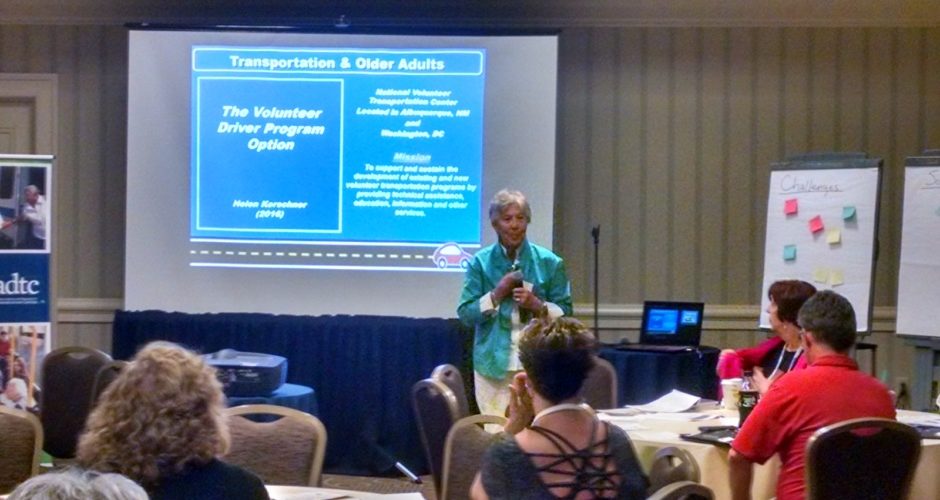NADTC Mobility Fair, July 27, 2016
Held at the National Association of Area Agencies on Aging Conference
San Diego, CA

Welcome back to our mini-series of posts on the recent NADTC Mobility Fair! We continue the series today with a post on our second session: Filling the Mobility Gap with Volunteer Drivers, featuring a presentation by volunteer transportation expert Helen Kerschner, Director of the National Volunteer Transportation Center, followed by small group discussions.
If you missed our first post, click here to learn about the Mobility Fair and highlights of the NADTC Transportation Listening Session.
This mini-series reviews the discussions that took place during the Mobility Fair, but these are issues that many agencies and programs face. Your input and perspectives are important and can help shed light on resources or ideas that are not highlighted here. We invite your reactions, thoughts, questions, and resources on any of the topics covered in these posts, so be sure to leave a comment below!
Highlights:
- Volunteer Driver Programs & Public Transportation, when used in combination, are a good way to make transportation more accessible to more people.
- Insurance: If a volunteer transportation program has its own drivers and vehicles, then the program must have its own insurance (in addition to the sponsoring organization’s liability insurance policy). If the sponsoring organization is providing transportation with its own vehicles, it must ensure that the liability insurance covers the volunteer drivers as well as the vehicles.
- Reimbursement: Typically, volunteer drivers are reimbursed and not paid. The federal reimbursement rate is $0.14/mile for a nonprofit, $0.19/mile for medical purposes, and $0.54/mile for a business, allowing some leeway for setting reimbursement rates. IRS 1099 forms typically need to be mailed out to individual volunteer drivers.
- Passenger Eligibility: Volunteer programs can have limited dollars and limited volunteers. Many programs enact eligibility requirements individuals must meet to qualify to receive volunteer transportations services. These might be age, disability or income level requirements. Some volunteer transportation programs offer mobility counseling or referrals to local mobility managers. Through counseling, riders who don’t qualify for the volunteer service can receive assistance in reviewing the range of available options in the community that may suit their needs.
- Driver Recruitment: One of the biggest advantages of utilizing volunteer drivers is their high retention rate. Often, volunteers begin by wanting to help others of a group who are in similar circumstances as themselves, and then expanding their commitment to help other groups as well. Recruitment methods vary a great deal, but one way to both recruit and gain recognition of the program is by collaborating with other organizations in the community. Examples of successful collaborations include teacher and veterans organizations.
- Multiple Jurisdictions: Many organizations and programs fill a particular niche in transportation need by serving or traveling to multiple jurisdictions. It is important, however, that the policy of an organization must specify that this allowed.
Resources:
Leave a Reply